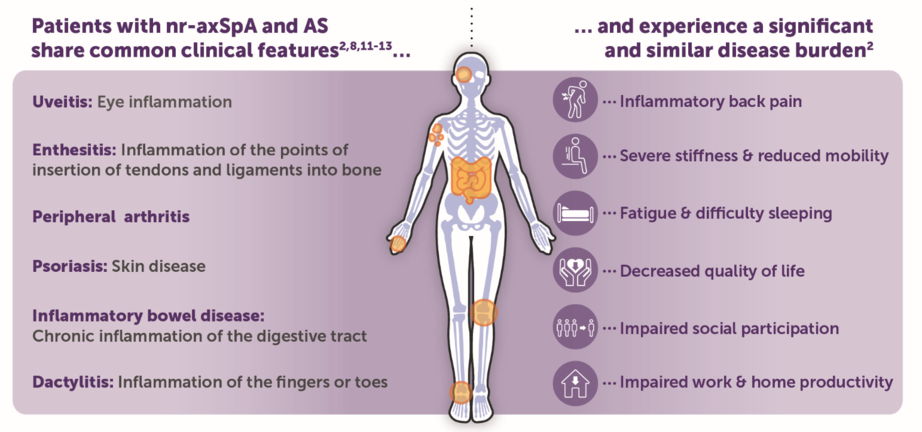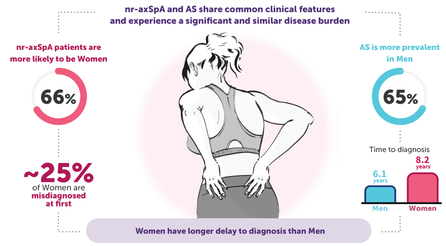Axial Spondyloarthritis
Axial Spondyloarthritis (axSpA) is a chronic, inflammatory rheumatic disease that affects the axial skeleton, causing severe pain, stiffness and fatigue. The disease typically starts in early adulthood, a critical period in terms of education and beginning a career path.
Many patients often experience other manifestations such as enthesitis, peripheral arthritis, dactylitis, uveitis, psoriasis, inflammatory bowel disease and osteoporosis.

In axSpA some patients have definitive structural damage of sacroiliac joints visible on X-rays and this subtype is called radiographic axSpA (r-axSpA), also historically known as ankylosing spondylitis (AS), whilst some patients do not have clear radiographic damage of sacroiliac joints, and this subtype is called non-radiographic axSpA (nr-axSpA).
Over time many patients with nr-axSpA go on to develop this structural damage of sacroiliac joints, ultimately progressing to r-axSpA. However, some nr-axSpA patients will never progress to this stage. It has been shown that being male and having a high level of inflammation (C-reactive protein in the blood and high degree of inflammation on the SI joint MRI) are the risk factors for progression to radiographic stage.
In addition, r-axSpA patients may further develop structural damage in their spine, due to the development of bony growths in the intervertebral joints, known as syndesmophytes. This can eventually lead to the fusion of vertebra (spinal ankylosis) which has a tremendous impact on the patients’ mobility, physical function and their ability to work and their quality of life.
Regardless of whether axSpA patients have radiographic or non-radiographic form of the disease, they suffer a similar high burden of disease.

